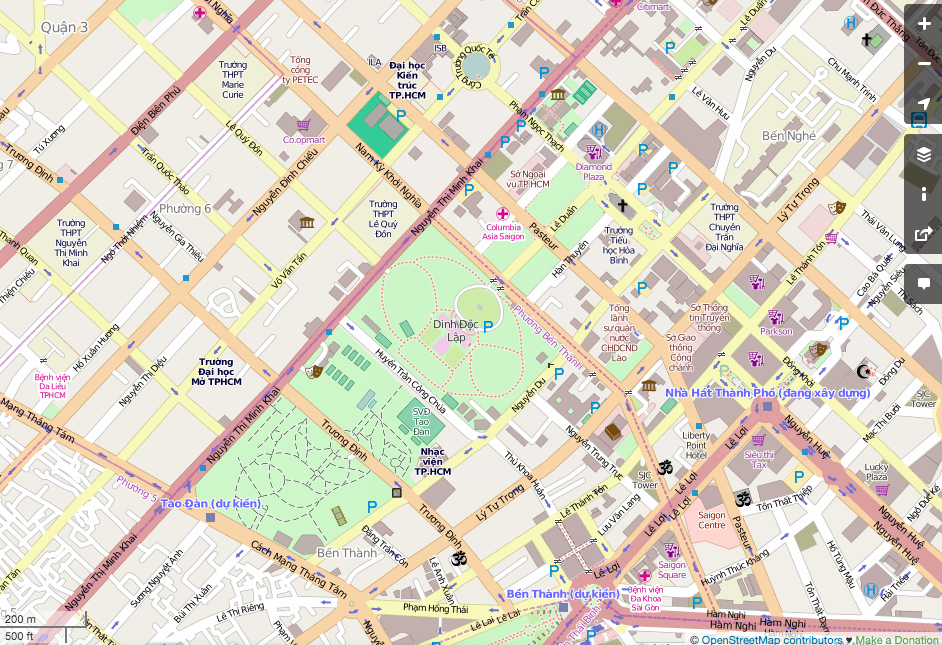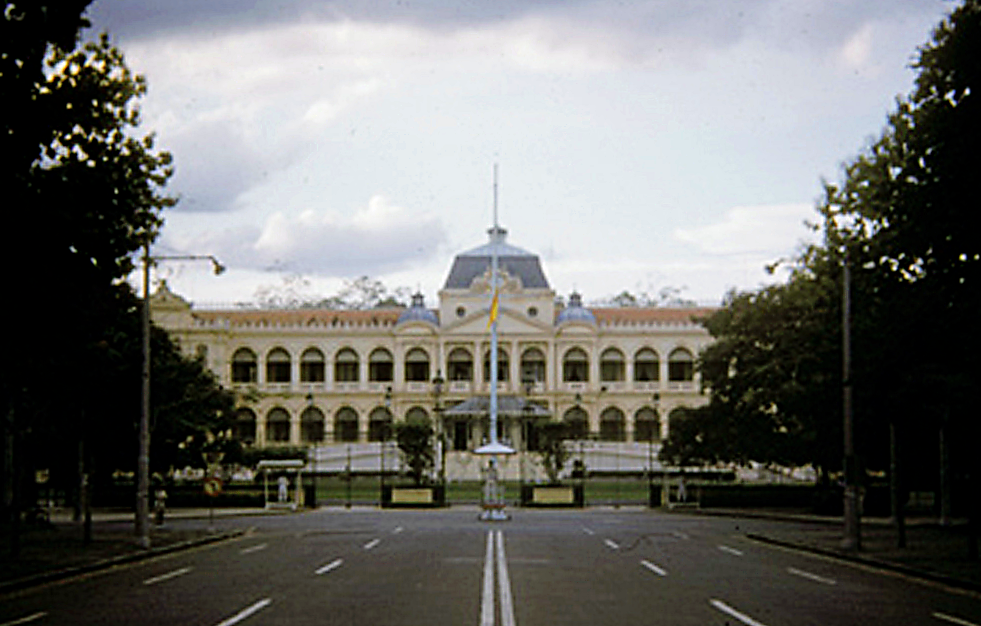Independence or Reunification Palace
Adapted from: http://www.flickr.com/photos/13476480@N07/7104877061/in/photostream/. CC License
1. Palace history:
It would have been very nice to visit the palace you see above. It was called the Norodom Palace and it was used consecutively as the power seat in the southern region of Vietnam. This palace was used by:
- The French Governor of Cochinchina (Gouverneur de la Cochinchine).
- The Japanese colonial officials in Vietnam, during the second world war.
- The French after the war, until they lost the war with the Viet-minh.
- The president of the State of Vietnam (South Vietnam), Ngô Đình Diệm, who renamed it independence palace.
Apparently Ngô Đình Diệm, was not a popular figure. Diệm proclaimed the creation of the Republic of Vietnam, naming himself as its president following a very dubious referendum in 1955.
In 1962, 2 pilots of his own Vietnamese Air Force bombed the palace in an assassination attempt and even if they didn't achieve their goal, they destroyed the palace beyond repair.
A new palace was constructed was commissioned according to a design by Ngô Viết Thụ, a Vietnamese architect. This palace was finished in October 1966 and it hosted the South Vietnamese government until the 30th of April 1975, when it fell to the North Vietnamese forces.
Currently this is the independence or reunification palace that can be visited in Saigon:
2. Independence Palace Today:
The independence palace is one of the main tourist attractions in Ho Chi Minh city today. It's located in 106 Nguyen Du Street, in the core center of the district 1 (also known as Saigon). The palace can be visited in the morning or in the afternoon (it's closed during lunch time) and the entrance cost 30.000 VND (as of Sep-2014).

Once the entrance is paid on a booth located at the left corner of the palace, the visitor enters to the gardens with a nice fountain in the middle. On the right side there are two replica tanks, like the ones used by North vietnamese forces when they stormed the palace in 1975. References to this event can be found all over the building.
Then you can head to the main entrance where the interesting visit really begins to happen because it feels like you are transported back in time to the 60's and 70's. Every single room, office, map, furniture, decoration telephone, communication equipment, look exactly as it was when the palace was taken over by the communist army.
You can visit for example:
1. Dining room for foreign dignataries receptions
2. Former office of the president.
Note the phones on the table.
3. Ambassadors accreditation room.
4. Bunker with some communication equipment.
5. Roof with a huey helicopter.
It's possible to visit every room in the 4 levels of the building. Each room has a plaque offering detailed explanation about what the space was used for. In the roof terrace there is the huey shown before. This helicopter is displayed next to a couple of circles marking the spots where the bombs of the failed attempt to kill Diem were dropped. They also sell beverages in this top floor.
In conclusion it was a very interesting visit. It definitively helped to read a little bit beforehand to understand the history behind it, but overall I'm happy we had the chance to go there.
